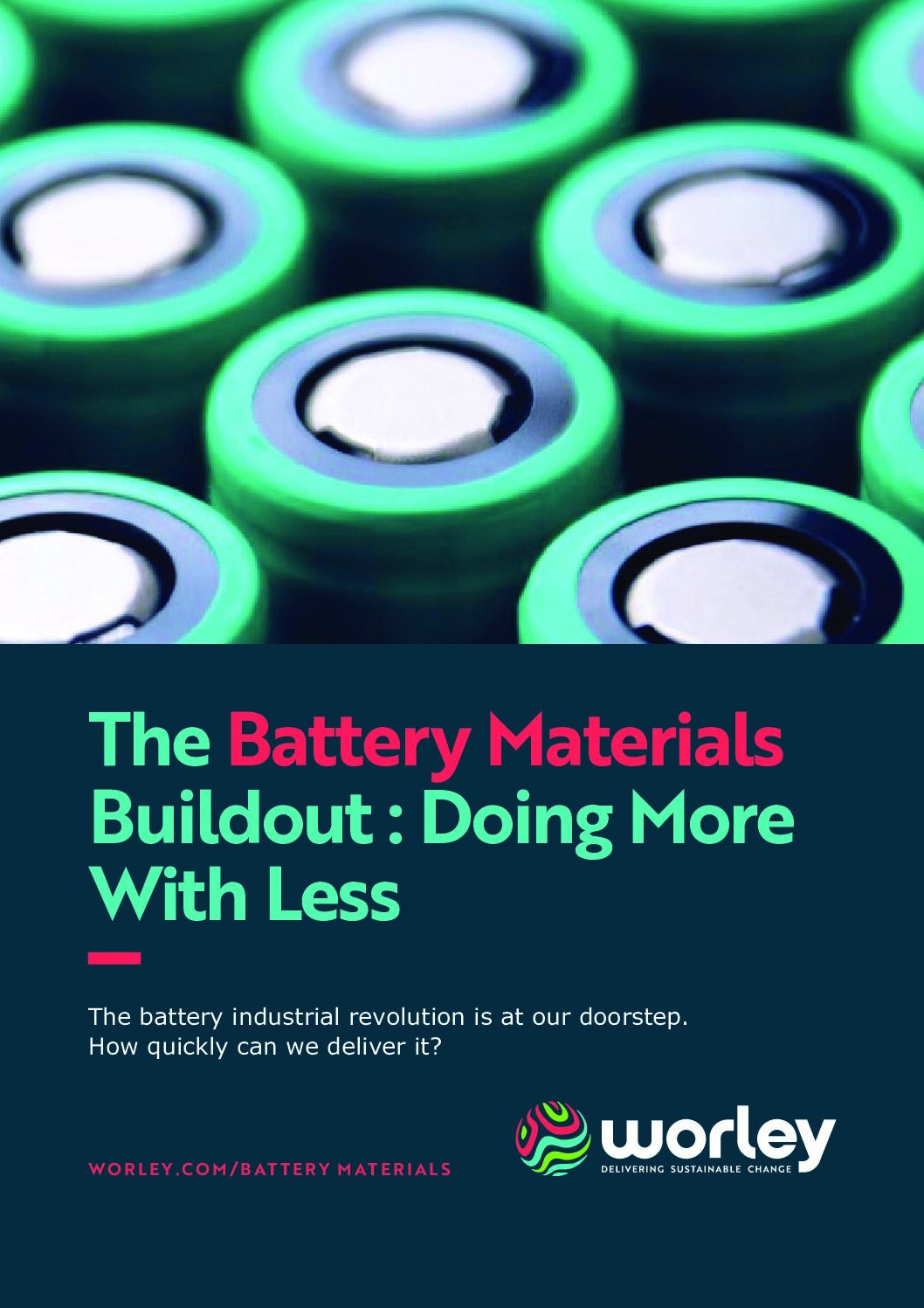
Graphite is the most common material in anodes because it can intercalate lithium ions during charging and release them during discharging, allowing for efficient energy storage and release. Typically coated on thin copper foil to create the anode electrode, materials and production methods are often unsustainable and at a heavy environmental cost.
Assessing the carbon impact of anode materials
At present, most graphite used is synthetic. While this avoids the need for mining raw materials, the process emits an estimated three times as much CO₂ as mining and refining natural graphite – with some estimates placing it far higher.
“Producing synthetic graphite requires high-quality petroleum or pitch coke, both derived from fossil fuels,” says Dave OudeNijeweme, Senior Director of Battery Materials, Worley. “Materials are heated at temperatures of over 2,600°C for weeks using electricity. So, obviously, it’s a highly energy-intensive process.”
But processes are improving. In previous decades, open furnaces were widespread for synthetic graphite with few safety controls in place and hazardous fumes a common occurrence. These days, closed furnaces have improved the processes while also increasing yields from below 50% to above 70%.
The case for silicon anodes
Silicon is attracting increasing attention as an alternative material for anodes. A key advantage is silicon’s enhanced energy density. “It’s possible to store a larger amount of lithium ions in silicon compared with graphite,” says OudeNijeweme. Crucially, there is the supply available. While supplies of other raw materials start to become scarce, silicon is second only to oxygen in terms of abundance in Earth’s crust.
Silicon anodes can be produced through various methods and from different feedstocks, resulting in significant variation in their characteristics. Recently, the silane production route has been under the spotlight due to the complexity of managing the flammability and toxicity of this material, which might restrict where it can be produced and how much.
Considering the environmental footprint, Minviro recently assessed several scenarios for silicon anodes. Even in the potential worst-case scenarios for production, the silicon-based anodes had an impact of 6.5kg CO₂-e per kWh. While the best-case scenario impact could be as low as 1.8kg of CO₂-e per kWh.
Despite this significant advancement, the silicon anode is unlikely to ever become carbon negative. “Graphite and silicon are not being recycled in a commercially viable way,” adds OudeNijeweme. “That means that if you don’t recycle it, or at least reuse it in a lower grade format, you need to keep making it. That means it’s not sustainable.”
However, there is another potential anode material that is abundant globally.
Bio-graphite: Anodes made from trees
Rather than mining graphite or producing it synthetically from fossil fuels, the solution could already be growing naturally.
There are many other bio-feedstocks available that could potentially be used for anode production from coconut shells to saw dust, but scale and consistency is important. A New Zealand-based start-up uses wood chip, another widely available product, to produce graphite materials very similar to those used in lithium-ion batteries.
The graphitisation process can occur under much lower temperatures than incumbent processes, further improving its environmental footprint. “Scaling up such processes to produce drop-in replacements for graphite-based anode materials would be a game changer,” says OudeNijeweme.
A Swedish and Finnish company is demonstrating how important expertise and by-products from different industries are for the energy transition. The company is one of the largest owners of commercial forests in the world and was previously focused on providing materials for industries such as paper. Using the byproduct lignin to produce hard carbon anode materials, which are the anode materials of choice for sodium-ion batteries, would provide a key stepping stone to a sustainable battery.
“This company is a big player in a totally different field that understands trees extremely well. They take a byproduct and upgrade it to a valuable material, and with its scale and size makes this extremely interesting,” says OudeNijeweme.
Finally, there are some novel processes out there that produce carbon-based anode materials from capturing CO₂. In summary, there are many possibilities to make significant improvements in the environmental footprint of battery anodes, especially the active materials, to the point where they become carbon-negative.
“Worley is prioritising the pursuit of the zero-carbon electric battery,” says OudeNijeweme. “We’re dedicating significant resources to devising scalable solutions to minimise the carbon footprint of each battery component, from the anodes and cathodes to electrolytes. This is an enormous task that no-one can do on their own, but through strategic partnering, we will.”
The importance of partnerships for the energy transition
“We’re seeking partners that can contribute to the energy transition. These partners can be customers, suppliers or technology developers”, says OudeNijeweme. “We can take something from a low technology readiness level and make that into something that’s commercially viable and can be scaled and deployed. A recent example is the announcement with NanoOne and we are open to players with new anode material process or recycling technology, so get in touch.”
The battery materials industry relies on trust and collaboration. “In the journey, there are often many different parties,” adds Darryn Quayle, Vice President of Resources at Worley. “Handing over from one party to the other, there’s an interface and a gap that you can fall through. What we provide is that single point of contact, that golden thread throughout the whole journey, from the first-of-a-kind technology through to the execution of a commercial plant.”
“It takes the right partner to take a concept through to a functioning, multibillion-dollar facility,” continues Quayle. “We have the capability to move from complex chemistries at a laboratory scale, right through to large volumes while assisting in the qualification processes that a product needs to advance in the industry.”
Missed Part 1? Read it here. Coming soon: Part 3 of five – Focusing on the ‘positives’: Addressing the environmental impact of cathodes.
Join us soon for our upcoming webinar, The Journey to a Net Zero Battery. Learn about the challenges and solutions from expert speakers representing Minviro, Nano One Materials, CarbonScape, and Worley.
To read more about how tech partnerships can accelerate the development of innovative technologies to commercialisation, download the document below.



